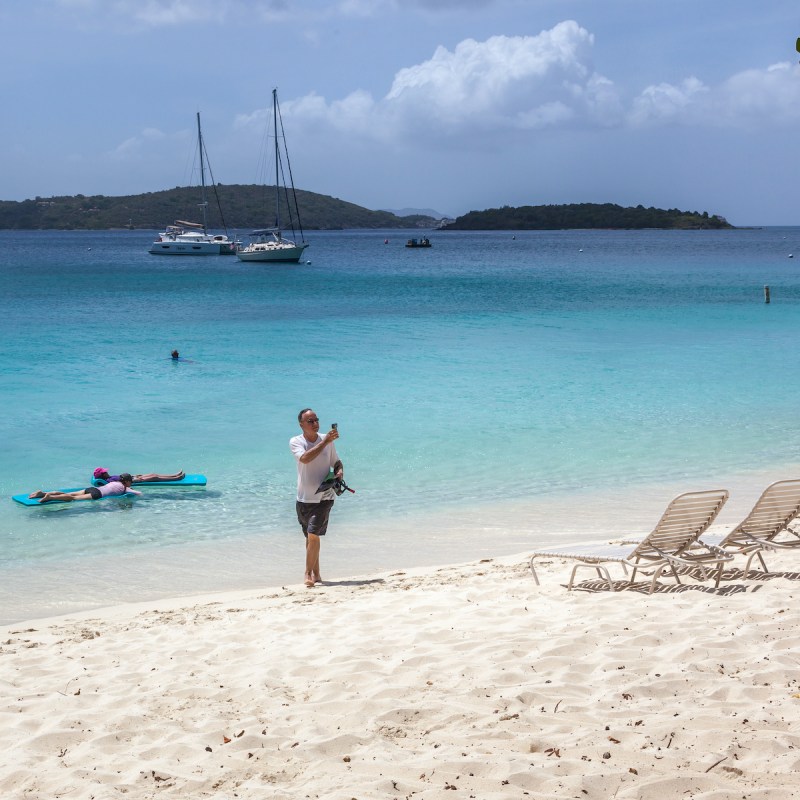
(Photo Credit: Valerie Johnson / Shutterstock.com)
As you get ready for your next beach vacation, you may want to think about what’s in your sunscreen — and not just to make sure it’s safe for your skin.
Videos by TravelAwaits
The tourism industry, from Hawaii to Key West, is asking people to check the labels of their sunscreen to make sure it’s “reef friendly.” This is an SPF that uses physical UVA and UVB filters instead of the chemical ones that have been linked to the deterioration of coral reefs.
To find reef-safe sunscreen, look for these active ingredients: zinc oxide and titanium dioxide. SavetheReef.org says “these ingredients form an actual physical block to shield skin from absorbing any rays (whereas chemical filters absorb UV and turn it into heat that’s released from the skin.) They come in a couple of different options.
“Both nano particle—a smaller particle size—and traditional zinc oxide sunscreens are both safe and effective, and both will be considered safe for reefs,” explains Joshua Zeichner, a board-certified dermatologist in New York City for SavetheReef.org. “The only difference is the cosmetic feel on the skin.”
Popular tourist spots are doing their part to protect the reefs. In the last 4 years, these beach-focused destinations have regulated sunscreen.
Hawaii
In 2018, Hawaii became the first state to pass a law prohibiting the sale of over-the-counter sunscreens with the chemicals oxybenzone and octinoxate because lawmakers say are contributing to the destruction of the state’s coral reefs and other ocean life. The law went into effect January 1, 2021.
Key West, Florida
In 2019, Key West followed, banning the sale of sunscreens with those chemicals because some studies show they are linked to coral reef bleaching.
U.S. Virgin Islands
In the U.S. Virgin Islands, you are asked to only use mineral sunscreen. The “Toxic 3 Os,” oxybenzone, octinoxate, and octocrylene, have been prohibited in the islands since July 2019. Guests are asked to use only non-nano mineral sunscreen containing zinc oxide and titanium dioxide, the only sunscreen ingredients deemed safe and effective by the FDA.
Harmful Sunscreen Ingredients
To make sure your sunscreen is “reef friendly,” SaveTheReef.org says to make sure it does not have these ingredients:
- Oxybenzone
- Octocrylene
- Homosalate
- 4-methylbenzylidene camphor
- PABA
- Parabens
- Triclosan
- Any nanoparticles or “nano-sized” zinc or titanium (if it doesn’t explicitly say “micro-sized” or “non-nano” and it can rub in, it’s probably nano-sized)
- Any form of microplastic, such as “exfoliating beads”
It’s not difficult to find sunscreens that are safe. Hawaii.com put together this list you can find at most retailers.
Destinations in this article:
